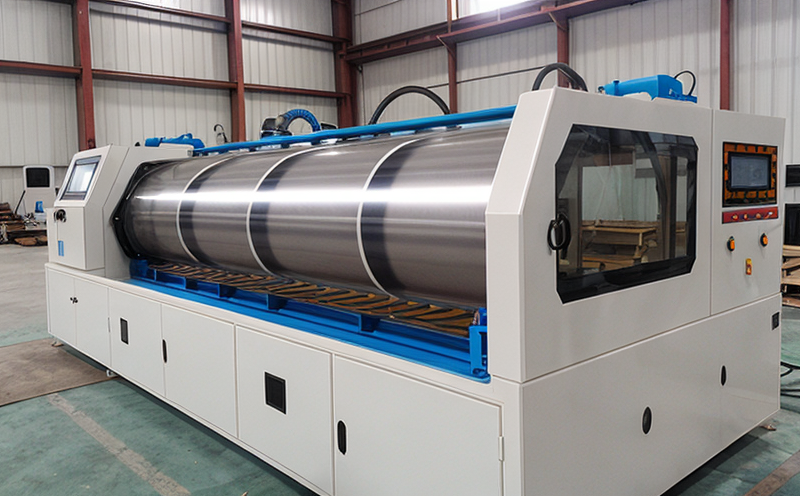Dimensional stability testing of laminated curtains and draperies
Dimensional stability is a critical factor in ensuring that textiles perform as expected over time. This is particularly important for laminated curtains and draperies, which are used in various environments where they can be exposed to changes in temperature, humidity, washing cycles, and other environmental factors. Testing the dimensional stability of these materials ensures their durability and aesthetic appeal throughout their lifecycle.
Laminated textiles combine two or more layers of different materials through bonding agents. These laminates offer enhanced performance characteristics such as improved strength, flexibility, and resistance to chemical and physical stressors. However, the integrity of these bonds can be compromised by environmental factors over time, leading to dimensional changes that could affect product quality.
The testing process involves subjecting samples of the laminated curtains or draperies to specific conditions designed to simulate real-world usage scenarios. This includes exposure to heat, light, humidity, and mechanical stress. By measuring any changes in dimensions before and after these tests, we can assess the dimensional stability of the material.
The testing apparatus used for this service typically includes climate chambers that can replicate a wide range of environmental conditions. We also use specialized equipment like digital calipers to measure precise changes in length, width, or thickness over time. Reporting is comprehensive and includes detailed data on how each sample responded to various stressors along with recommendations for improving dimensional stability where necessary.
Real-world applications of this service are vast. For instance, manufacturers need accurate information about the performance of their products under different conditions so they can optimize design parameters or choose appropriate materials for new projects. Retailers benefit from knowing which products will hold up best in various settings before making purchasing decisions. Additionally, interior designers and architects rely on these tests to select fabrics that meet specific aesthetic requirements while ensuring longevity.
Understanding how different environmental factors impact the dimensional stability of laminated textiles is crucial for maintaining high standards across industries ranging from home furnishings to commercial spaces like hotels and offices. Accurate testing helps ensure consistent quality control throughout production processes, thereby enhancing customer satisfaction and brand reputation.
- Climate chambers for controlled environmental exposure
- Digital calipers for precise dimension measurements
- Data analysis software for comprehensive reporting
The results from such tests play a vital role in ensuring that textile products meet regulatory requirements set forth by organizations like ASTM, EN, and ISO. Compliance with these standards not only assures customers but also supports sustainable practices within the industry.
Benefits
Ensuring dimensional stability through rigorous testing offers numerous advantages to businesses operating in the textile sector:
- Enhanced Product Quality: By identifying potential issues early on, companies can improve their product offerings and customer satisfaction.
- Increased Customer Confidence: Knowing that products will maintain their shape and appearance over time builds trust between manufacturers and consumers.
- Cost Savings: Preventing defects during manufacturing stages reduces waste and lowers overall production costs.
- Regulatory Compliance: Meeting industry standards ensures compliance with local laws, which can prevent costly penalties or recalls.
In summary, investing in dimensional stability testing for laminated textiles is an essential step towards delivering superior quality products that meet both current and future demands.
Quality and Reliability Assurance
Accurate measurement of dimensional changes during and after exposure to various stressors is crucial for ensuring product reliability. Here are some key aspects of our testing process:
- Temperature Control: Our climate chambers allow us to precisely control temperature fluctuations, simulating different climates that textiles might encounter.
- Humidity Management: Proper humidity levels can significantly influence the behavior of certain materials. We carefully monitor and adjust these conditions throughout testing.
- Mechanical Stress Application: To mimic real-world use, we apply controlled mechanical stresses to test samples thoroughly.
- Data Collection: Advanced software tools collect extensive data points that help in analyzing the impact of various factors on material performance.
The accuracy and reliability of these measurements are vital for making informed decisions regarding product development, quality assurance, and regulatory compliance. Our commitment to precision ensures that every test result provides valuable insights into improving textile products' overall quality and durability.
International Acceptance and Recognition
The importance of dimensional stability testing extends beyond national borders; it is widely recognized internationally as a critical component in ensuring product quality. Organizations such as ASTM International, European Committee for Standardization (CEN), and International Organization for Standardization (ISO) all have established standards that guide the conduct of these tests.
For example, ASTM D570-18 provides specifications for measuring changes in linear dimensions due to moisture absorption and desorption. Similarly, EN 20384 outlines procedures for evaluating shrinkage properties of fabrics intended for use as curtains or blinds. These standards ensure consistency across borders so that consumers can trust the results regardless of where they purchase their textiles.
By adhering to these internationally accepted guidelines, we contribute to a global marketplace where businesses and consumers alike can rely on accurate and consistent measurements. This fosters innovation within the textile industry by providing clear criteria against which new materials and techniques can be evaluated.





